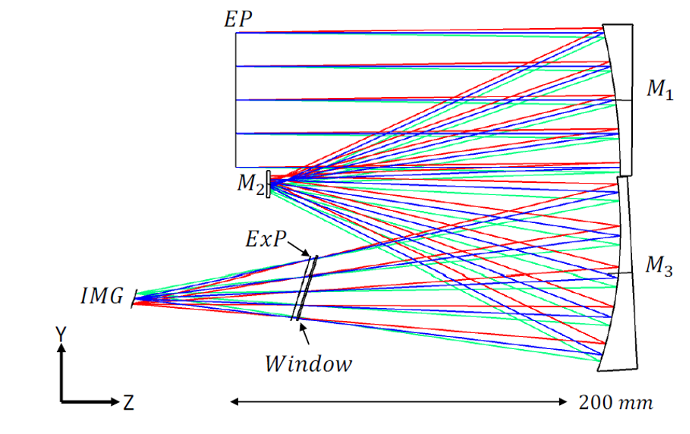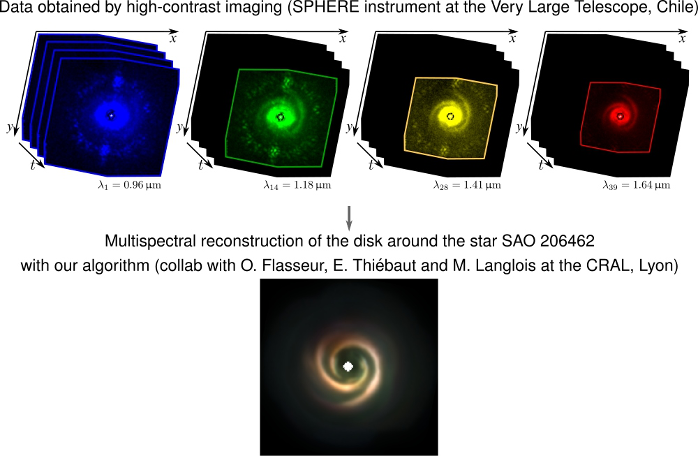Optical Design & Image Reconstruction
The Optical Design and Image Reconstruction (ODIR) project-team gather researchers with complementary skills in optical design, microscopy, inverse problems, image processing and reconstruction. We conduct research projects along 3 main directions :
![]() Optical design dedicated to imaging systems, often off-axis, with high apertures, and wide fields of view, applied to three main fields: astronomy, space and ophthalmology;
Optical design dedicated to imaging systems, often off-axis, with high apertures, and wide fields of view, applied to three main fields: astronomy, space and ophthalmology;
A 3-mirror freeform telescope with a real exit pupil, designed for thermal IR observation of the Earth.
The specifications were provided by ESA (Clément Freslier's thesis).
→ more info on our activities in Optical Design
![]() Computational imaging with a special focus on two unconventional modalities : holographic microscopy and synthetic aperture radar (SAR) imaging, based on coherent illumination of the sample (microscopic scale) or of the scene to be observed (Earth observation). These modalities require the physics of image formation models to be accounted for in the digital reconstruction process (inverse problem resolution, physics-based deep learning).
Computational imaging with a special focus on two unconventional modalities : holographic microscopy and synthetic aperture radar (SAR) imaging, based on coherent illumination of the sample (microscopic scale) or of the scene to be observed (Earth observation). These modalities require the physics of image formation models to be accounted for in the digital reconstruction process (inverse problem resolution, physics-based deep learning).
Multispectral holographic reconstruction with aberration compensation applied to Gram-stained bacterial microscopy [Brault et al., Applied Optics 2022, link to the paper][Brault et al., Scientific Reports 2023, link to the paper]
→ more information on our activities in Computational Imaging
![]() Astronomical imaging, with both instrumental developments and proposals for innovative approaches to astronomical image processing.
Astronomical imaging, with both instrumental developments and proposals for innovative approaches to astronomical image processing.
We developed with the National Observatory of Thaïland (NARIT) and the Observatory of Lyon (CRAL) a coronagraph based on evanescent waves. This figure shows our lab experiments demonstrating the strong attenuation of on-axis light in order to reveal a much fainter off-axis source (representing the companion of a star).

We developed algorithms to reconstruct images of circumstellar disks from a sequence of multi-spectral observations in high-contrast imaging (observations behind a coronagraph). By modeling the spatial and spectral correlations of the stellar nuisance, our method better separates the disk from the stellar leakages. [Flasseur et al., MNRAS 2024, link to the paper]
→ more information on our activities in Astronomical Imaging

